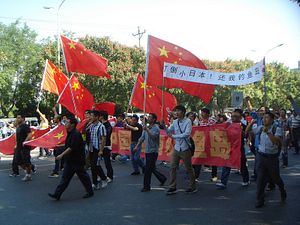It’s true — Chinese high-ranking officials and scholars in national think tanks do believe that “new type of great power relations,” or “new type of major country relationship,” as it is also translated, also applies to Sino-Japan relations. However, given the current situation on East China Sea, it may sound more ironic than realistic.
Such “new type” relations have been proposed by Chinese leaders mainly to describe China’s vision for its bilateral relationship with the United States. The U.S. agrees with this idea but really does not show much interest in it. China has indeed tried to improve its relationship with the dominant United States. China also intends to apply the principles of “new type great power relations” — no conflict or confrontation, mutual respect, and win-win cooperation — to its relationships with other major powers like Europe Union and Japan.
Unlike responses from the U.S., which are very diplomatic and sophisticated, Japan’s response through its recent political and diplomatic moves seem to be very clear and firm. China believes Japan’s responses are the main causes of the current tension between these two major powers. Some states view Beijing’s confidence or even assertiveness as inappropriate and unnecessary. From the Chinese perspective, though, this assertiveness is a response to Japan’s unilateral moves regarding the disputed islands, which in itself is indicative of a much more profound change in Japan’s political climate.
The United States plays an interesting and important role in this relationship. During his recent visit to Beijing, U.S. Vice President Biden agreed with Chinese President Xi Jinping’s comment about creating a “new model of major country cooperation” between China and the United States. Biden may have been sending a message to Tokyo: the security commitment to Tokyo remains, but the U.S. also seeks cooperation with China. The implied message may be that the U.S. does not want to be involved in an unnecessary military conflict between China and Japan, and hence these two countries should jointly find a peaceful solution to the current confrontation.
As laudable as such remarks and the repeatedly stated U.S. position are, Washington will still find it difficult to carry out substantial responsibilities in the region. This is especially true when both China and Japan have shown no signs of stepping back from the brink. Biden’s pre-planned visit to northeast Asia already revealed the unique and important role the U.S. still plays, as well as highlighting the tangled dilemma it faces in this on-going dispute between China and Japan. It is not as simple as merely adding up weights on either side. How the United States will continue to play its role in this issue still remains to be seen.
The question is, in the current situation, are China and Japan doomed to repeat a historical pattern?
The on-going dispute has been a direct confrontation between China and Japan. Leaders of past generations agreed to shelve the territorial dispute, yet miscalculations and misperceptions have ever been created and embedded in both countries. Japan’s purchase of the disputed islands in 2012 finally provided the chance for both countries to take off their masks and to have a showdown.
As the tension continues to intensify in a pattern of spiraling escalation, it should be clear that this is not an occasional dispute over maritime resources. Instead, the dispute represents a challenge to different strategies. On a basic strategic level, there is a challenge to the strategic buffer zone that China intends to create in the western Pacific. Moving a bit deeper, there is a challenge to Sino-Japan relations, which have remained complex and fragile since normalization in 1972. The fissure between Beijing and Tokyo has long been in existence but might have been somehow underestimated by leaders, which contributed to the rapid escalation of the current situation. Looking at the bigger picture, the current tensions are a challenge to China’s claim of a peaceful rise — but are also an opportunity for China to substantiate its commitment to peace.
The principles of “no conflict or confrontation, mutual respect, and win-win cooperation” are important. But with the current background, the prospects for a “new type of great power relationship” between China and Japan seem to be very dim. Hence, a strategic reconstruction or rearrangement may be necessary for both to forge a more realistic and feasible view of each other, which at least should not conceal or overlook the major differences that have existed for decades. In a way, the current tensions may represent an opportunity. Understanding and reconciliation may begin just at the point when both sides foresee the unbearable consequences that result from overlooking and miscalculating differences.

































